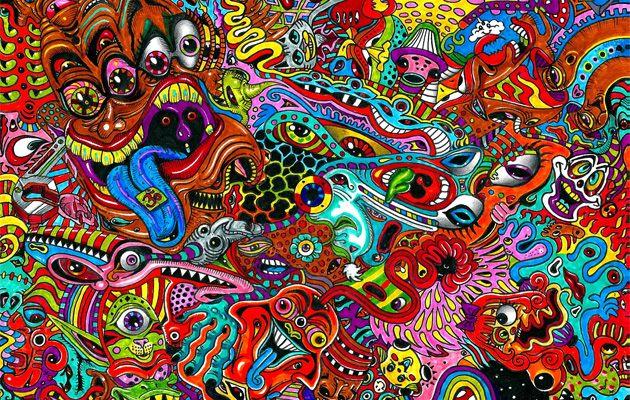
Being a general proponent of freedom and self-expression, I’ve always been one to support even the weirdest experiments in music. It doesn’t matter whether it’s my thing, I can still appreciate someone’s effort to create something novel. I mean the same goes with hairstyles and fashion, right? (Although personally, I’ve never understand those folks who shave off their eyebrows and then draw them on again with a pencil…but more on that another time.)
Experimental electronic music (EEM) occupies a small but significant pocket of attention in the music world. It differs from EDM in both its approach and its scope. Whereas dance music exists to make people shake their booties, experimental is about breaking the frontiers of sound.
The main requirement for EDM is that it’s relatively catchy; it induces an emotional response, either causing you to break out or settle down. There is an express purpose, often a marketable one. Maybe your preference is for house or techno, but either way you’re part of an audience that’s looking to get into a heightened state of pleasure. All together now!
The genre of experimental music, on the other hand, lacks a unifying purpose. Normally it’s the product of someone who’s been doing a lot of thinking. So it makes you think, too. And think. And think. Some of it does border on catchy, but whether that’s by design or accident is debatable. Just because you like a song by an experimental artist doesn’t mean he wanted you to like it. See what I mean?
There is something very obsessive about making music, but that tendency is driven to the extreme in EEM. The same way early 20th century Dada artists boiled down the elements of daily life and sound to their minutest forms, in order to offer an ironic commentary on what seems rational to most people, so EEM artists create reductions that capitalize on essence rather than appeal. In many cases, the result ends up being appealing anyway – at least to those who are willing to listen long and hard enough to “get it”.
But sometimes the postmodern approach of experimental music is just plain – well, unmusical. Whatever point is being made, it’s difficult to relate to a fork tine being plucked ad infinitum against a background of looped seagull cries, while the narrow, distorted whine of a car derby escalates in intensity. All this slowed down, reversed and sped up again, mingled, reconstituted, stretched and wobbled. Or whatever.
Music has the capacity to melt us, inside and out. It can make us laugh, cry, rage, dance or chill. But the key to all of this is melody. Chord progressions, repeated motifs, and note patterns are what invite us into receiving a song’s message. Even the bare sounds of the world need to be drawn together in some way, to succeed in pleasing the ear.
I don’t doubt that it is art, but some EEM falls short of the horizon of melody and song. These are experiments in sound, pure and simple. And without enough of a melody, an experimental song becomes nothing more than an exercise in navel-gazing. Maybe it’s fun to stare at your own (or that of a very close friend), but for a whole, endless hour? Or six? I mean some of this “music” is really full of itself. It’s more conceited than Avicii, who’s just trying to make you raise your hands and dance.
I’ll use the metaphor of a chef designing a meal for a large group of people. She knows her ingredients, mixes them together carefully, and produces an edible feast. But if she obsesses too hard about one or two elements, she ends up reducing what is really appetizing to something that isn’t even food anymore. And when I go to the trough, I want to be fed.
Maybe some people want to listen to “anti-music”, and that’s great. There are a cluster of great experimental music websites out there. If you’re interested in developing your own opinions about EEM, try checking out these links:



